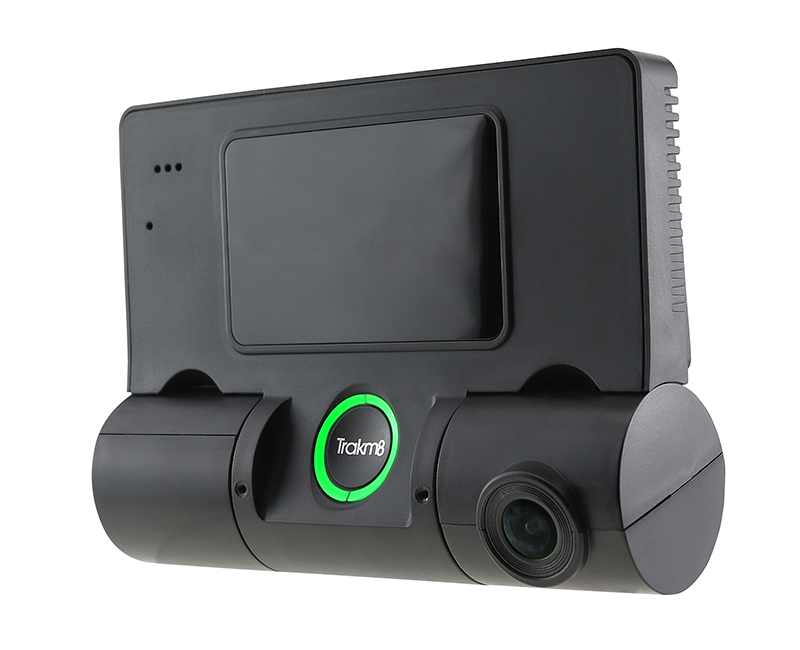Telematics allows useful data to be transmitted over a large distance, connecting people in different areas, and promoting effective communication. Vehicle and fleet telematics specifically, are becoming increasingly popular due to an increase in attention to safety regulations, environmental impacts, and rising operation costs.
What is telematics?
Telematics combines both telecommunications (the electronic transmission of data through phone lines, cables and radio) and informatics (computer systems, data retrieval and data storage).
Telematics aim to transmit information over long distances and can be utilised in both commercial and non-commercial settings. The element of efficient, electronic data retrieval has appealed to a range of industries over the years, with industry leaders increasingly ramping up the pressure to comply with strict safety and security regulations.
Industries relating to field service, home delivery, long distance haulage, public sector and Blue Light, OEMs and construction have all benefited from bespoke telematics solutions that assist them in a variety of ways, such as:
- Asset Management
- Route Planning and Optimisation
- Customer Experience
- Electronic Proof of Delivery
- Fleet Management, reducing insurance costs and improving driver productivity and safety
Utilising GPS technology, vehicle diagnostics, cameras and sensors, installing telematics solutions is fast becoming the standard amongst fleet-based and vehicle reliant industries and workforces.
What is fleet management telematics?
The combined term ‘telematics’ is commonly used to apply to vehicle and fleet telematics and is adopted widely by automotive, fleet and haulage industries. With telecommunication networks having the ability to transfer data in real time, fleet managers have utilised this concept to their advantages, increasing visibility and improving safety amongst fleet drivers.
Specific vehicle location information through telematics is used to help businesses manage their fleet-based workforce far more effectively. Live vehicle tracking, achieved through the use of GPS and in-vehicle diagnostics, is one of the main ways vehicle telematics technology is utilised.
This technology sends, receives, and stores information regarding your vehicle/s through a specific device. Trakm8 offer a range of onboard devices that boast intelligent telematics capabilities – each of these systems are bespoke to set industries:
Telematics devices are connected to vehicles in several ways, including the vehicle’s OBD (On-Board Diagnostics) port, 12v Aux socket, on top of the battery and hard-wired.
Devices are fitted with SIM cards or in-built SIMs which send data to servers via mobile phone networks. Fleet managers are able to quickly receive data relating to driving habits, speed, location, and planned routes.
What vehicles can telematics be used for?
Telematics are utilised by a range of industries each boasting different sized fleets and vehicle types. At Trakm8, our telematics solutions can be tailored to suit certain vehicles, allowing fleet managers to gain relevant data related to their industry regulations.
Telematics for cars
Telematics solutions for car-based fleets tend to consist of vehicle cameras (RoadHawk dash cams) and integrated telematics systems with in-built GPS. The typical priorities for a fleet manager overseeing cars include:
- Monitoring vehicle location and route
- Tracking driver habits and road safety
- Tracking mileage and fuel consumption
- Aiming to reduce carbon emissions
All of these aspects, and many more, are easily achieved through installing vehicle telematic systems in cars, spanning the entire fleet and viewed through one simple database.
Telematics for vans
Telematic systems for van can be a little more in-depth, focusing on all of the above aspects but also including additional app technologies focusing on ePOD (Electronic Proof of Delivery).
With many vans being used for delivery and transportation services, customer service is often at the forefront of fleet management. Fleet telematics in vans can allow drivers to secure electronic signatures and e-documents to easily store and send data back to base offices and record departments.
More accurate ETAs can be relayed to customers and drivers can easily plan more realistic delivery times and still meet deadlines.
Telematics for trucks
Telematic solutions for trucks again encompass all of the above, but tend to have the addition of a multi-camera system. At Trakm8, we offer recording devices and a range of cameras in order to provide truck, HGV, LCV and bus drivers with full visibility and access to their surroundings.
Multi-camera systems can allow larger fleets to become compliant in relevant areas, including:
- DVS (Direct Vision Standard)
- FORS (Fleet Operator Recognition Scheme)
- CLOCS (Construction Logistics and Community Safety)
With live and recorded footage through up to 8 vehicle cameras, fleet managers can have a 360° view of their driver’s vehicle and surroundings. This also means that accidents can easily be seen and used as evidence in case of dispute.
Types of telematics devices
Telematics solutions encompass a great deal of technologies, each transmitting useful and relevant data to fleet managers.
GPS:
Through the use of GPS technology, our telematics systems can easily pinpoint where vehicles are and what their current status is. GPS tracking is a core and central element of the telematics system and can offer significant insights.
GPS tracking can also gather information regarding:
- Vehicle speed
- Incidents of harsh braking or tight cornering
- Vehicle diagnostics and health
- Geofencing
- Dash Cam recordings
- Driver ID
Vehicle Cameras:
Vehicle cameras, from dash cams to multi-camera systems, help fleet managers monitor who is driving a particular vehicle and where. They also capture crucial evidence of incidents on the road and can provide FNOL (First Notification of Loss) alerts.
Onboard cameras also help drivers become more aware of their surroundings, particularly in larger vehicles with multiple blind spots, and help to increase safety on the roads for both drivers and pedestrians.
Vehicle Sensors:
Vehicle sensors allow drivers to access audible proximity alerts for potentially obstructive objects, increasing safety and boosting productivity when driving in built-up areas. Data relaying the fact that alerts were deployed in the event of an accident is crucial for fleet managers dealing with insurance issues.
The use of sensors can also benefit other road users, alerting people of larger vehicles turning or reversing.
Tachograph Downloads:
Tachographs are a legal requirement for certain sized vehicles and help to govern regulations and legal driving hours. Telematics solutions offer easy downloads for tachograph data, collecting what is relevant to a fleet manager and allowing fleets to be fully compliant.
How can fleet managers make effective use of telematics data?
Through the use of the telematics devices, fleet managers can utilise key data to ensure that their priorities are met. Using the gathered data, fleet managers can create effective plans that focus on driver safety, fleet compliance and saving costs.
To make effective use of telematics data, a fleet manager can:
- Use driving habits data, mileage and camera footage to help lower insurance premiums.
- Monitor vehicle health and diagnostics to schedule in timely maintenance, plan for upgrades and reduce the risk of breakdowns.
- Track driver ID and behaviours to improve safety on the roads.
- Use camera footage, tachograph data and sensor alerts to achieve full compliance with all regulations.
- Use ePOD data, GPS tracking location data and route optimisation to improve customer service and increase productivity.
The benefits of fleet telematics
Clearly, there are significant benefits to utilising fleet telematics and using the technology together can dramatically improve fleet performance.
The main benefits to fleet telematics are:
- Reduced fleet costs
- Increased productivity
- Full fleet compliance
- Improved driver safety and behaviour
- Lowered carbon emissions
- Effective management of business and private mileage
- Reduced insurance premiums
- Improved customer experience
If you want to learn more about the benefits of fleet management telematics, check out our guide to the best fleet management software.

What can fleet telematics do for your business?
Fleet telematics can massively transform a business that relies on a fleet to operate. Not only does it help to reduce costs in a range of ways, but it also helps fleet managers and business owners gain better control over their fleet and its day-to-day operations.
Telematics encompass so much more than just tracking vehicle location. They massively streamline fleet operations, allowing the most efficient routes and driving behaviours to be adopted, with an improvement to customer service and driver safety completely intertwined.
At Trakm8, we’ve worked with a range of industries that have hugely benefited from having bespoke telematics solutions installed. Our detailed case studies show how each business has best utilised the data collected from telematics and how this has transformed their fleet and overall business performance.
Find the right telematics solution for your fleet of vehicles
The experts at Trakm8 can help you to find and build the right solution for your business.
Get in touch with our team today and we’ll learn all about your business, fleet and daily operations to decide what telematics devices would provide the most value to you.


